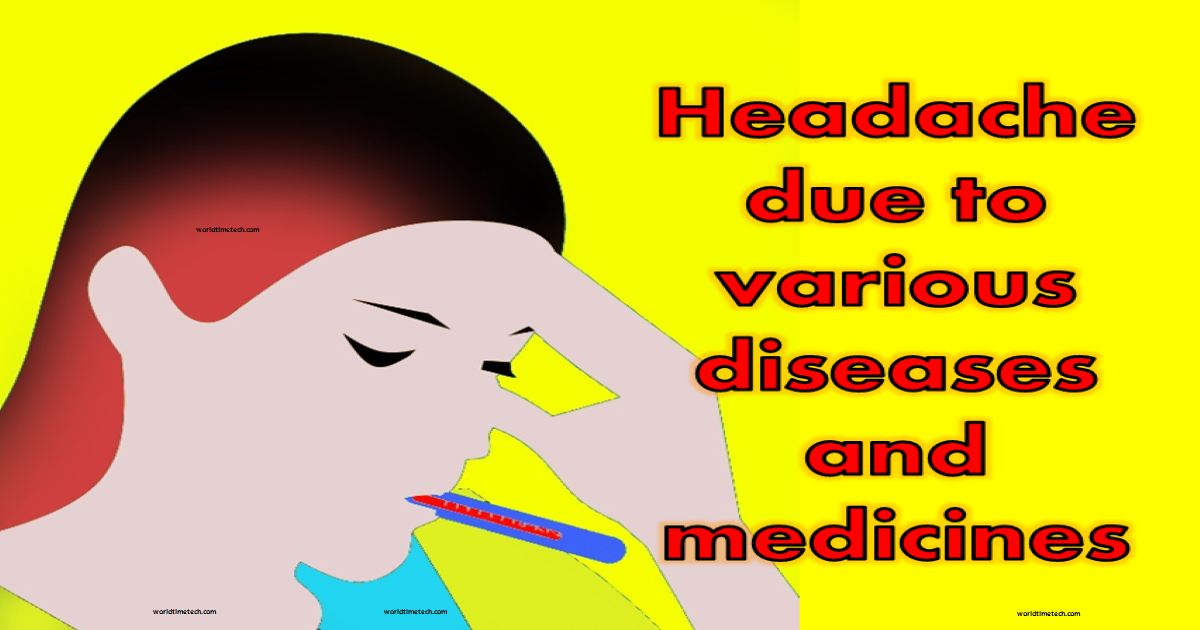11 Aug, 2022
Headache due to various diseases and medicines
Fever is a common problem for all of us. It is rare to find a person who has not suffered from fever in his life. The most common fevers are viral fever and typhoid and paratyphoid fever. All these three judges have a lot of headaches. Pain all over the head and severe headache. When the fever subsides, the headache gradually subsides. It should be remembered that there is no need to treat the headache, only treating the fever will relieve the headache. However, in many cases, taking drugs like Dizepam gives good results.
Headaches are associated with high blood pressure. Studies have shown that 50% of patients with high blood pressure come to the doctor with headaches. Usually, when the diastolic blood pressure rises above 120 mmHg, a headache occurs. Pain is mild in nature. The pain is in the neck and back of the head. Studies have shown that people with long-term high blood pressure have no headaches. But those who suffer from sudden high blood pressure have more headaches. Treating high blood pressure can improve headaches.
Almost all patients who suffer from heart disease need to take nitroglycerin as prescribed by their doctor. Taking medicine like nitroglycerin causes headaches in severe forms. Many times the patient stops taking the medicine. But it is about to come that slowly the headache starts to decrease and at some point, the pain is no more.
There is a type of fluid around our brain called Cerebrospinal Fluid. There is a covering around the head called meninges. The meninges have three membranes. Between the two membranes lies the CSF. This CSF is from the head to the waist. Sometimes a CSE test is needed to diagnose a disease such as meningitis. CSF is then collected from the lumbar spine. It is called lumber puncture.
Besides, LP has to be done to give spinal anesthesia in various operations. This causes some CSF to leak out and cause headaches. Such headaches can last for days or even weeks. The salient feature of this pain is that the pain is worse when sitting or standing and less when lying down. The pain is felt mostly in the back of the head.
If the headache is severe after LP, the patient should lie down. If the pain does not subside, 5% glucose saline should be given.
There are some bones at the back of our neck called Cervical Vertebrae. There are seven Cervical Vertebrae. Between each of the seven vertebrae is a soft bone called the intervertebral disc. 8 Cervical nerves emerge through the bone. The lower nerves supply the muscles of the neck and the muscles of both hands > Brings action and feeling.
Nerves 1 and 2 innervate the muscles of the back of the head and provide sensation. If for any reason Cervical Vertebrae are hit, bone loss due to bone disease or intervertebral disc is displaced then the nerves are pressed and pressure on the first 1 or 2 nerves can cause headache. This pain is aggravated by moving the neck. This pain is at the back of the head.
X-ray cervical spine or MRI can easily detect this disease.
Pain killers and cervical collars relieve pain. In many cases, if the medication does not work and the pain is severe, surgery may be required.
